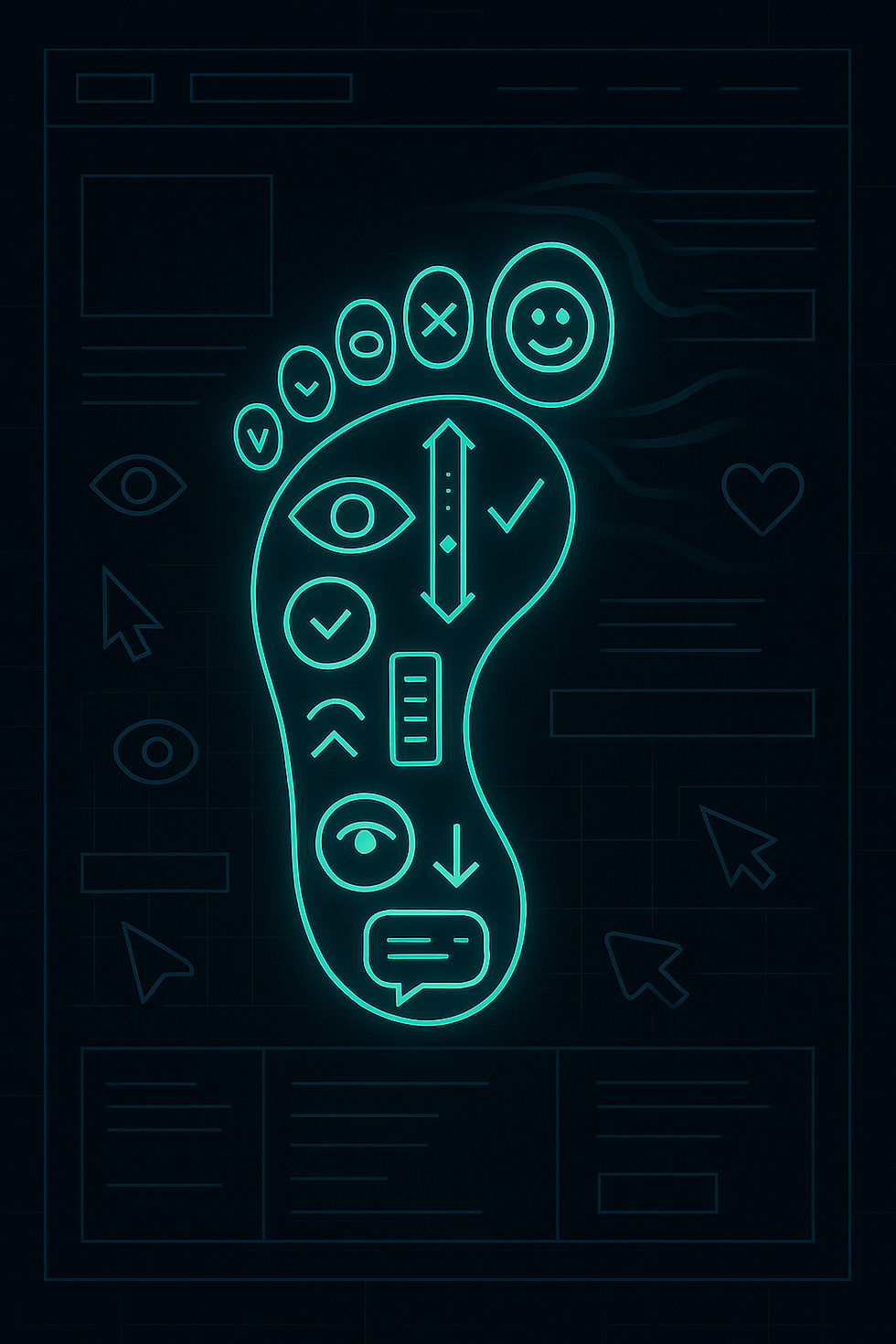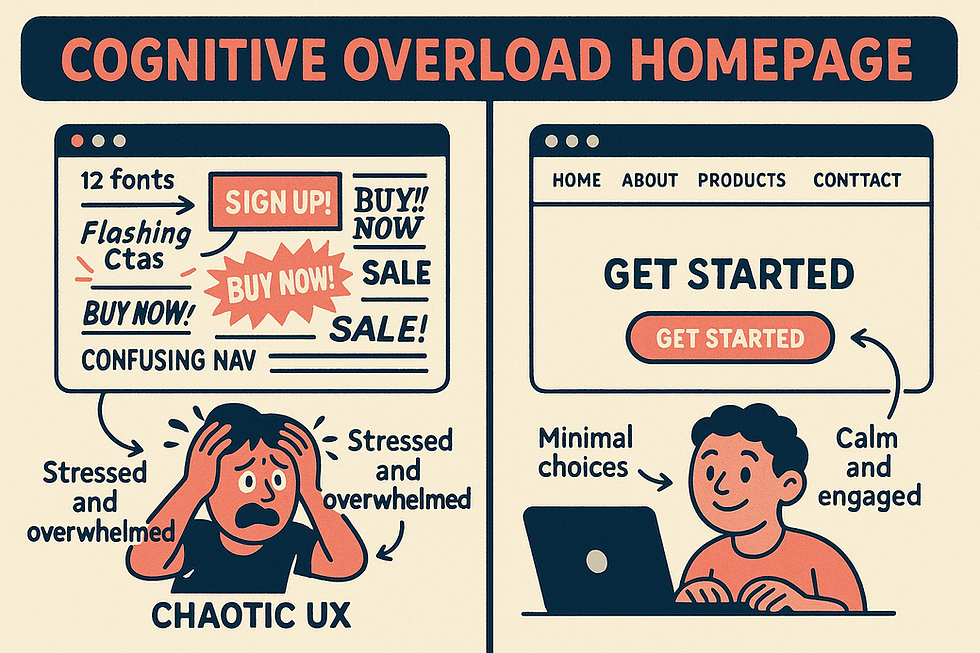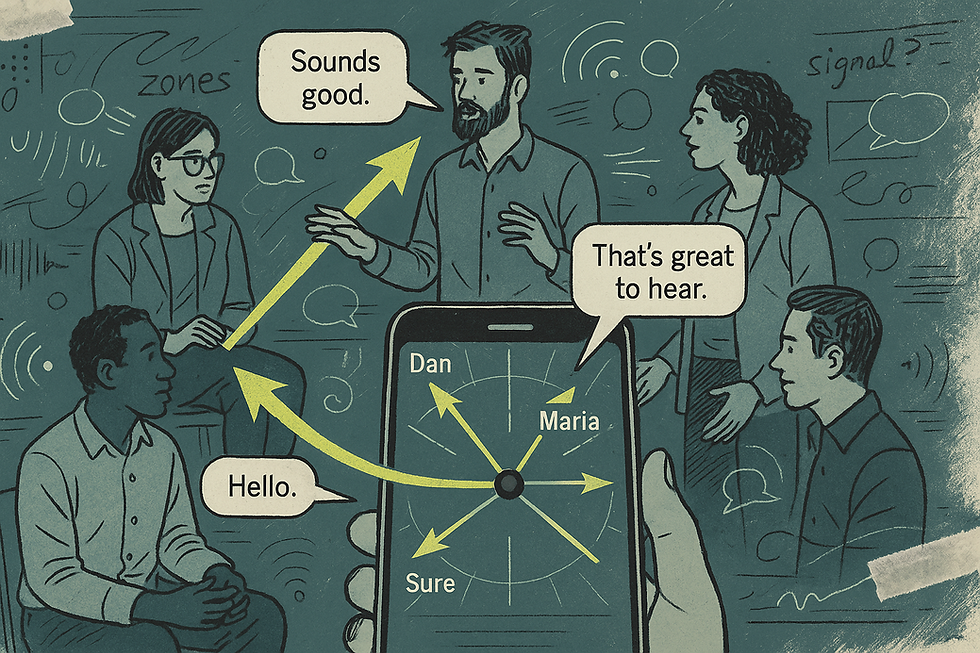Your Digital Footprint Has a DNA — Here’s How to Decode It
- Emily Neuhoff
- Jul 23
- 4 min read
By Commit Me Co DESIGN
Behavioral UX meets Neurodivergent Systems Strategy

If your users feel confused, distracted, or unsure — it’s not a vibe issue. It’s a signal processing failure. And your digital footprint is leaking behavioral cues everywhere.
What Is a Digital Footprint, Really?
Most agencies treat your digital footprint like a paper trail of marketing activities — keywords, backlinks, meta tags. But if you zoom out and view it like a cognitive psychologist, what you’re really seeing is a pattern of behavioral signals left behind as users try to make sense of you.
This includes everything from:
Time-on-page and rage clicks
Micro-movements on nav menus
Scroll stoppage points
Bounce after a confusing CTA
In short: your digital footprint is a psychological trail, not just a technical one.
The Behavioral Science Behind Clicks, Bounces, and “WTF Moments”

When a user lands on your homepage, they start running a split-second risk assessment:
“Is this trustworthy? Relevant? Worth my time?”
We’re talking limbic system-level stuff — fight, flight, or read the FAQ.
That reaction is shaped by:
Visual hierarchy (cognitive load)
Copy tone (semantic trust)
Navigation friction (choice paralysis)
Color, spacing, and motion cues (emotional triggers)
Take Fogg’s Behavior Model (Fogg, 2009):
Behavior = Motivation × Ability × Trigger
Most websites fail not because people aren’t motivated — but because the trigger isn’t clear or the task is too hard to complete. Your site can rank on Google and still confuse the hell out of your audience.
Yes, Your Brand Has a Digital DNA
Every brand has a digital phenotype — the observable expression of your back-end choices, front-end UX, tone of voice, and behavior flow.
We call it your Digital DNA — the subconscious code that governs:
How fast people trust you
Where they hesitate
Whether they convert or bounce
And what they think about you later (even if they don’t remember your name)
This DNA is made up of:
Microcopy → tells the brain how to feel
Layout → tells the brain what to do next
Visual anchors → tell the brain where to go
Loading time and responsiveness → tell the brain whether you’re competent
Even Hick’s Law (1952) applies:
The more choices you offer, the longer it takes to decide. If your nav bar has 11 links and your CTA uses passive voice? Expect drop-off.
Traditional SEO Misses the Point
Old-school SEO is obsessed with:
Keywords
Schema
Technical tags
Necessary? Yes. Sufficient? Absolutely not.
Google’s algorithm is increasingly behavior-aware — it watches:
Click-through rates
Bounce-back speed
Session path entropy (how messy the journey is)
Which means your search ranking is behaviorally influenced. If users can’t process your value fast, or get emotionally overwhelmed, you get penalized.
And this is where psychology kicks in.
How Cognitive Load and Emotional Design Work Together

The brain is a finite processor. When people land on your site, they’re:
Filtering noise
Searching for clarity
Applying fast heuristics (Tversky & Kahneman, 1974)
If your digital presence has 12 fonts, 9 calls-to-action, and a contact button that opens a PDF… that’s not “unique branding” — that’s cognitive chaos.
According to Sweller’s Cognitive Load Theory (1988), every additional task — even finding the menu — adds effort. And effort is the enemy of conversion.
Real-World Example: Signal Clarity in Action
One nonprofit we audited had gorgeous branding… but a 4% donation completion rate. Why?
The CTA button said “Learn More” instead of “Donate Now”
The donate page had four dropdowns and two pop-ups
The user’s mental model didn’t match the form’s logic
After we restructured their flow with behavioral triggers, clarified copy, and emotional mapping, donations jumped 312%.
SEO didn’t change. Psychology did.
Introducing: The Digital DNA Test™
At Commit Me Co DESIGN, we don’t start with wireframes. We start with behavioral forensics.
Our Digital DNA Test maps:
Your cognitive load hotspots
Behavioral mismatches (like passive CTAs or overchoice)
Brand trust signals (or lack thereof)
Emotional tone leaks
Think of it like a psychological blacklight. It shows you what your users actually experience — not what you think you’re saying.
Why This Matters (a Lot)
Whether you’re a founder, a nonprofit, or a Fortune 500 team — you need:
Systems that make emotional sense
Content that mirrors user language
Flows that align with mental models
And metrics that actually track human behavior, not just clicks
SEO isn’t dead — it’s evolving into a behavioral science. And your digital footprint? It’s a living, breathing reflection of your brand’s psyche.
Ready to see your subconscious signals?
Take the Digital DNA Test™ — free for a limited time.
We’ll run a full audit of your behavioral UX, SEO patterns, and trust signals — and show you where to optimize for the brain, not just the bot.
📚 References
Fogg, B. J. (2009). A behavior model for persuasive design. Proceedings of the 4th international Conference on Persuasive Technology.
Hick, W. E. (1952). On the rate of gain of information. Quarterly Journal of Experimental Psychology.
Sweller, J. (1988). Cognitive load during problem solving: Effects on learning. Cognitive Science, 12(2), 257–285.
Tversky, A., & Kahneman, D. (1974). Judgment under Uncertainty: Heuristics and Biases. Science, 185(4157), 1124–1131.
_edited.png)




Comments